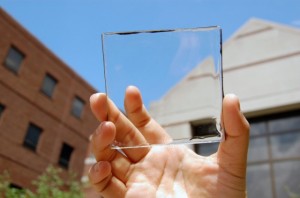Tesla and SolarCity-owner Elon Musk has just revealed their latest product, called the ‘Solar Roof’, which is essentially tiles with integrated, high-efficiency solar cells behind tempered glass.
The new solar tiles are stylish as one can choose the most matching look for any building from the four different styles available (textured glass, slate glass, Tuscan glass, smooth glass tile). By using glass, the durability of tiles is increased and might even outlast the building’s life as claimed. There is a slight loss of efficiency (they work at 98 per cent), but the company is working on improving this rate.
Tesla claims the new roof could be more affordable than conventional ones when calculating utility costs as well, and when bundled with Tesla’s Powerwall ‘personal battery solutions’, households of the future shall be able to generate most of the power they would use.
Meanwhile researchers are also working on how to utilise windows to generate electricity.  Scientists at the Los Alamos National Laboratory, New Mexico, have published a paper in Nature Energy claiming that a thin film layer of ‘quantum dots’ added to existing windows could enable low-cost window-based solar photovoltaic (PV) systems, which could reach higher efficiency (up to six per cent) than current systems. Quantum dots are nanometre-sized semiconductors, which enable scientists to set which type of light is absorbed. The layer is easy to apply, and the silica-protection protects against oxidation, for enabling durability.
Scientists at the Los Alamos National Laboratory, New Mexico, have published a paper in Nature Energy claiming that a thin film layer of ‘quantum dots’ added to existing windows could enable low-cost window-based solar photovoltaic (PV) systems, which could reach higher efficiency (up to six per cent) than current systems. Quantum dots are nanometre-sized semiconductors, which enable scientists to set which type of light is absorbed. The layer is easy to apply, and the silica-protection protects against oxidation, for enabling durability.
Photos: Tesla Solar and Los Alamos National Laboratory, New Mexico



